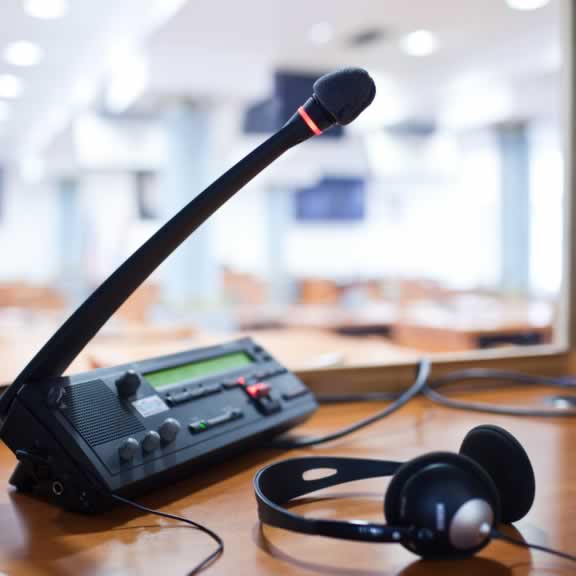We will always choose the interpreting mode that best suits your needs.
Interpreting is the spoken translation that allows verbal interaction between two or more people, who do not share the same language. It can be performed in a variety of ways, depending on the context. Different types of interpreting include simultaneous, whispering, consecutive, or liaison interpreting.
Therefore, it is fundamental to choose the one that is most suitable for the event in question.

Simultaneous interpreting:
Generally used in multilingual conferences and meetings. It requires the presence two interpreters.
Do you know why you need two interpreters?
In the booth, both interpreters are “active” throughout the whole event, whether they are actually speaking or not: they support the colleague with instant researches, glossaries, but, most of all, the two interpreters translating alternatively, to cope with the mental stress and fatigue deriving from the activity.
The interpreters sit in a soundproofed booth and simultaneously translate what the speaker is saying. Participants can listen to the translation through dedicated headphones. Given the high level of concentration required, two interpreters are present for each language combination, and they take turns of 20-30 minutes, for no more than 8 hours (inclusive of a one-hour break).

Whispered interpreting:
For short meetings or, in any case, when only a limited number of people (2 or 3) need the translation.
This is very similar to simultaneous interpreting, but the interpreter sits next to participants and whisper the translation into their ears. One interpreter suffices for events not exceeding two hours: otherwise, it will be necessary to engage two interpreters, who will take turns

Consecutive interpreting:
For official visits, seminars, or meetings with a reduced number of attendants. It might require the presence of two interpreters.
Do you know why you need two interpreters for assignments exceeding two hours?
In consecutive interpreting, the level of attention of interpreters inevitably drops after working for two hours on their own: the note-taking and translating activities are energy-consuming and, therefore, it is absolutely necessary to have a colleague ready to step in.
The interpreter sits with the speakers and translates their speeches after these have been delivered, thanks to a particular technique of note-taking. One interpreter suffices for events not exceeding three hours: otherwise, it will be necessary to engage two interpreters, who will take turns.

Liaison interpreting
For meetings between two people, business meetings, fairs, as well as in the Legal and Health field (in this case, it is referred to as Community interpreting).
This is similar to consecutive interpreting, in this case the interpreter translates, sentence by sentence, a dialogue between two people.
